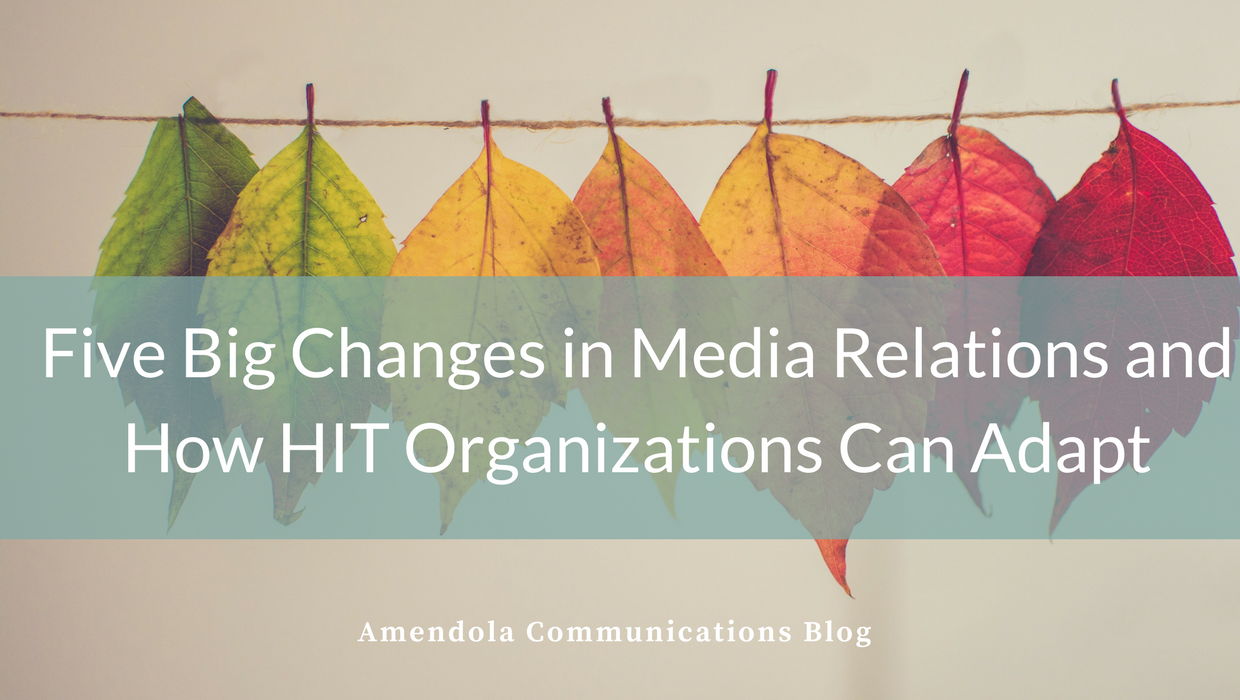A recent webinar sponsored by Cision explored several changes in media relations over the last few years and offered tips on steps healthcare IT (HIT) organizations should take to prosper in this new reality.
The webinar was led by Michael Smart, a PR pro who says he has trained more than 7,000 communicators in his career, and is based on a white paper he wrote. Smart notes that, in his own observations, he’s seen far too many organizations chase the “Holy Grail” of coverage in the New York Times or Wall Street Journal to the detriment of smaller, lesser-known publications that in some cases could deliver even more value to clients.
Refreshingly, Smart also offered among the sharpest denunciations I’ve come across of the corporate scourge known as multi-tasking, stating, “I hate multitasking. It’s this thing we were all excited about 10 years ago until we realized it’s awful, much like kale. I seriously think it destroys potential and it’s killing a lot of PR pros, and so I’m on a mission to defeat it.”
Amen, though I will admit to enjoying kale in the proper context. To Smart’s comments, I’d like to add my own sarcastic slogan for multitasking, to be emblazoned across inspirational posters hung above the busy cubicles of America: “Multitasking: Why do one thing well when you can simultaneously do 10 things poorly?”
While many of the changes in media relations that Smart describes will be familiar to PR veterans, a refresher never hurts. In that spirit, I attended the hour-long webinar and condensed the five key points down into this quick, bite-sized summary.
- Expand your definition of the “media” in “media relations” to include any third-party trusted by your audiences: In other words, explore nontraditional outlets that may be easier to work with and have similar reach and credibility to the old guard. This can include well-known and widely read sites like Vox that have only been around for a few years, or even corporate blogs. The key is simply whether the site has earned your desired audience’s trust. How do you know which of these sites are worth pursuing? Start by using SimilarWeb to research site traffic and use Moz to examine domain authority.
- Journalists incentives have changed. They must increasingly focus on web traffic: Again, no shocker here for anyone who’s been paying attention. But this new reality opens up new possibilities for HIT organizations. Smart suggests that journalists will be more receptive to your pitches if you can show you’ll be able to distribute their content to a wider audience yourself, ideally by leveraging a social account with a lot of followers or an email newsletter, for example.
- Get noticed before you pitch: All experienced marketers know that journalists will be more receptive to their pitches if they’ve been able to previously establish solid working relationships with those journalists. But Smart offers good advice for establishing those relationships, which are especially important given that there are four PR pros for every professional journalist in the U.S. and U.K., according to statistics he cited during the webinar. He suggests developing a key list of 10 influencers, and then devoting 10 minutes per day to reading content they’ve produced, and when appropriate, reacting to the content with a compliment or a few kind words. He touts this as a simple daily task to “dramatically” increase your response rate. A private Twitter list is a great way to keep up-to-date with content from your top influencers.
- Faux customization often fails: Specific and sincere customization can help you stand out. Smart warns to avoid beginning pitches with broad, non-personalized statements. As supporting evidence for journalists frustration with this approach, Smart cites data from Cision’s 2017 State of the Media Report. When asked to improve the situation, journalists two most frequently cited pieces of advice were, first, to research and understand the media outlets they’re pitching, and second, to tailor their pitches to suit those outlets.
- Journalists don’t have time to do the legwork anymore: Reporters are always on deadline. They don’t have as much time as they once did to research sources or story ideas and they have an “insatiable need for visuals,” which can often be hard to acquire, according to Smart. The big change here is how much of this unglamorous legwork journalists will let HIT organizations do for them once they’ve proven to be trustworthy and credible, Smart says.
No doubt the practice of media relations will continue to change just as quickly as the media ecosystem itself does. But HIT organizations looking to keep pace with this evolution would do well to try implementing some of Smart’s advice. Smarter, more targeted pitching could help free us of our quality-killing, attention-sapping multitasking obsession.
